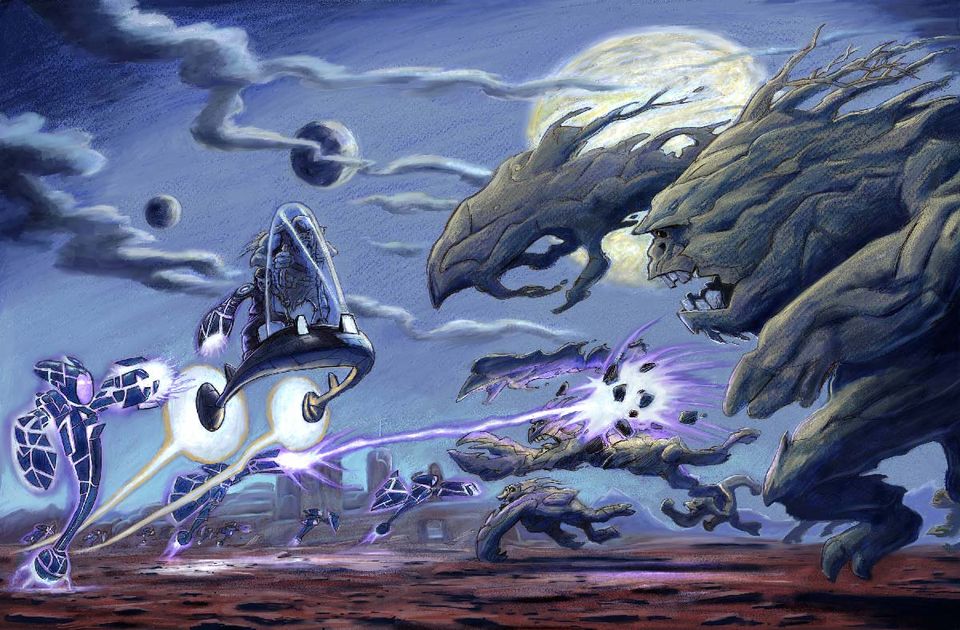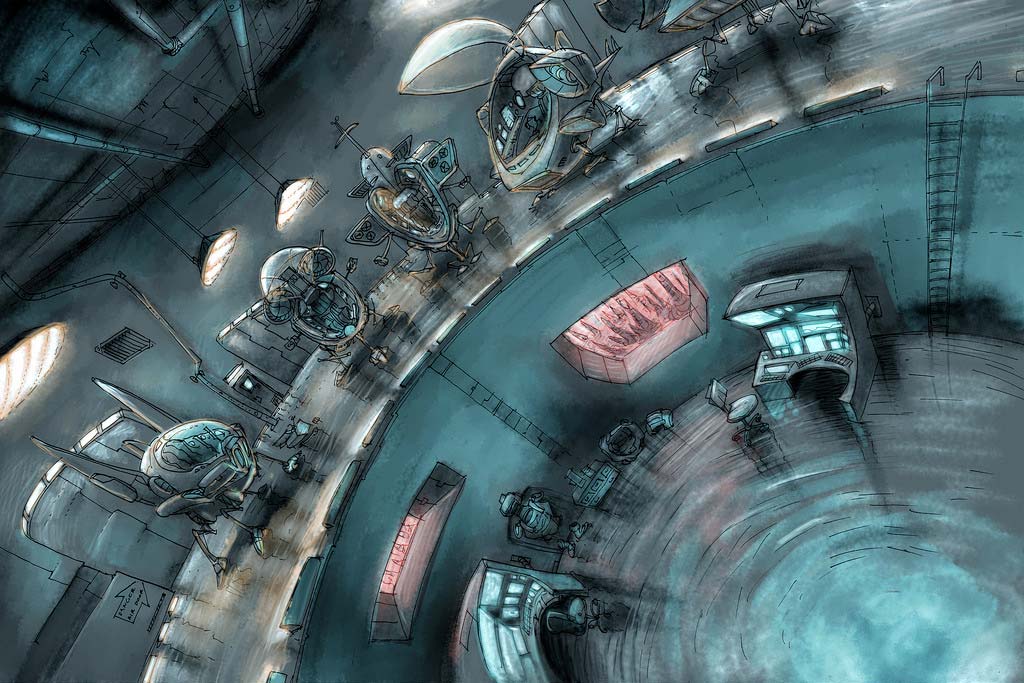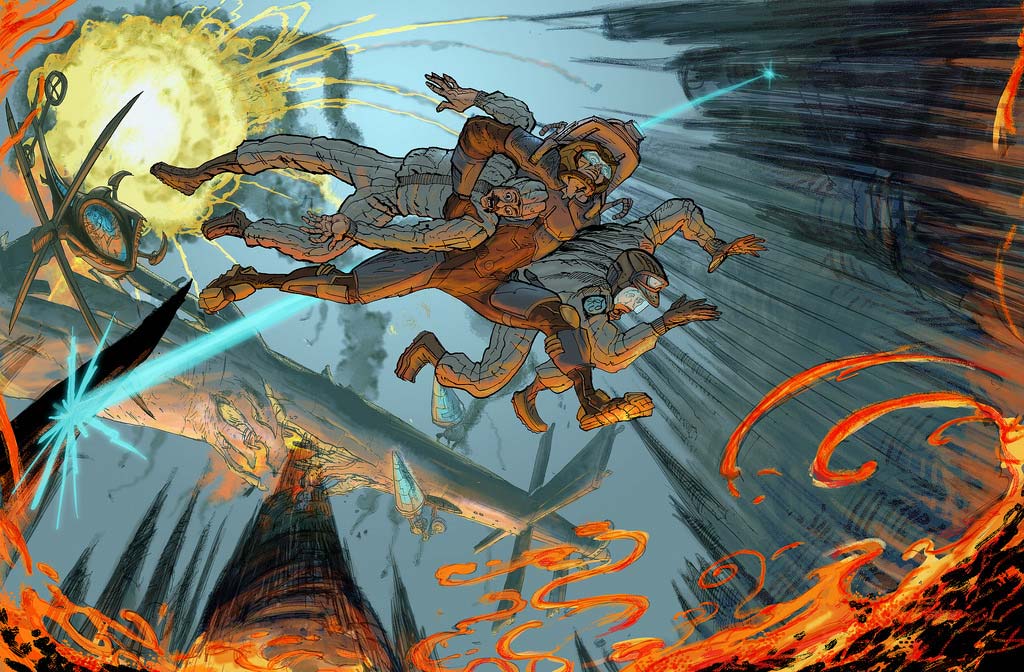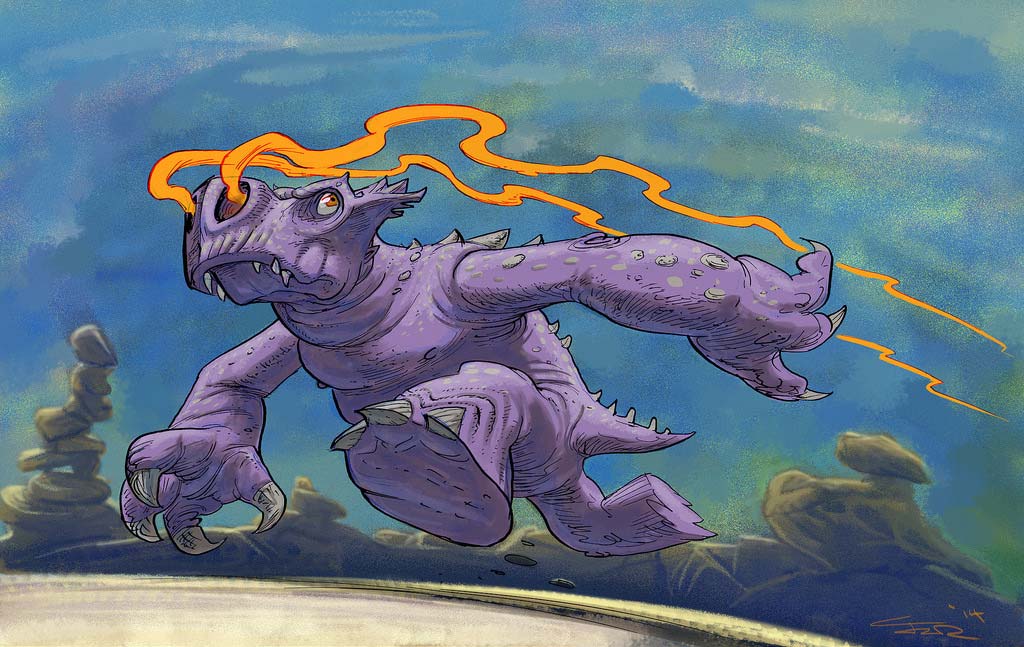Artist Spotlight: Joel Zain Rivers
Website Editor • February 26, 2020
Everyone’s work is deeply idiosyncratic: in our regular Spotlight segment we explore artists’ experiences and inspiration to understand what defines and inspires their unique styles.
Can you give us a brief background on yourself?
I have been drawing cartoons, comics, and monsters since I can remember. I attended a arts magnet high school in San Francisco in the 80’s called, Ruth Asawa San Francisco School of the Arts, (SOTA). I received a Bachelors of Fine Art from Humboldt State University, graduating in 1992. After being disenchanted with the idea of being an artist for a while, I worked on a short film/children’s book for a friend. Around that time I re-discovered comics, notably Allen Moore’s books. After trying and failing, I got a grant to self-publish my first series of comics. Lots of things happened after that, like partnering in a concept art company with 2 other artists while in Maine. Lately, I have worked as a web-comic artist for Edgar Rice Burroughs, Inc. and have done some recent storyboard projects.

What kind of influence does your location have on your career?
I now live in the desert southwest in the United States. There are not many opportunities for commercial artists here, so I rely on my network, clients, and contacts from elsewhere. This has made me more introspective, and I think more and more seriously about independent ventures and projects. It is less expensive to live here, and the cultures and landscapes are part of what drew me here and continue to inspire me. Also my roots are out here, so I feel at home.
What is your process like when combining traditional and digital methods?
I’m in my 40’s so traditional media is part of my ritual when creating art, sketching, or coming up with ideas or visual approaches. I love the ease and quickness of using Painter, ArtRage, or Sketchbook Pro, but the experiential and tactile reality of paper, pencil, ink, etc, and the randomness of mistakes, reactions to mistakes, and making them “work” is part of my process. When you can’t “undo” you make different choices.
Could you pick one piece of art that has made a lasting influence on you, and if so why?
Well, I can say that the first time I saw a comic drawn by Joe Kubert, a Tarzan comic that was fighting a Pterodactyl, that moment crystallized. I loved dinosaurs and I loved comics as a kid, but in that moment I saw you could combine things. You could make a surreal world where there were no rules limiting you. That has stayed with me. Also the work of Moebius - the great Jean Giraud.
What skills or techniques are you working to try improve at the moment?
I am always working on anatomy and composition, those are always challenges. I find just drawing every morning to get the bad drawings out, so to speak, is mostly the key. Also good reference material is absolutely crucial.
Can you give our readers a tip or trick you have come across that has made your work a lot easier?
Use as many layers of preliminary drawing as you need. Draw a layer, then bring it to 30% visible and draw another layer on top. Just keep going until it clicks. I recently added, using values, a flat gray for shadows BEFORE I do final lines in a digital comic page. This really helps with proportion, composition, and clothing.
How can people who are interested in discovering more of your work find it?
Scriba is a revolutionary digital stylus that is ergonomically designed to comfortably fit your hand and uses unique Squeeze-Motion technology. Order here.
Articles

The United Nations has described the disruption to education caused by the pandemic as ‘unparalleled’. At the virus’ worldwide peak in April, it is estimated that over 90% of all enrolled learners, from kindergarten to bachelors and beyond, had their education affected by school closures and the pandemic (UNESCO). For many university students and older children, they have had to adapt quickly to online learning. They can keep in touch with their peers and teachers online and continue their studies, albeit in a highly modified way. As challenging as this may be, this experience will help equip them for a future that is increasingly online. For parents of younger children, they are assuming a new role: their child’s home school teacher. This is in addition to their usual childcare and household duties, their work responsibilities and often emotional and financial worries caused by the pandemic. Stressful? Yes. The good, and somewhat surprising, news? The experts advise that you don’t teach your children - at least not in the way you might expect.

If the recent outbreak of Covid-19 has taught us anything, it's that many adults do not wash their hands effectively. It has never been more important that we support our children to develop good personal hygiene to keep themselves and our families safe. This seemingly easy task can be very difficult for children with fine motor skill difficulties. In this article, we explore some ideas to support your child with hand washing.

Lockdown has brought the digital future into the now. Online shopping, entertainment, education and more have moved from the periphery to the mainstream to, in many cases, the only option. With the necessity of social distancing looking to continue for many months, it appears that this rapid digital revolution is here to stay. This means that life as we know it, in most of its sectors, has changed forever. In order to survive, businesses are having to adapt rapidly, embrace technology and look to the future. Architecture is no exception. There has been a widespread adoption of technology and VR over the past few months in response to the lockdown across all of society. Elderly grandparents who were once resistant to adopt new technologies talk of “Zooming” and have started video chatting with their family members to combat loneliness. Art galleries that were once considered stuffy or pretentious are now pioneers in VR technology, with Google Art & Culture offering tours of London’s National Gallery or the Musee D’Orsay in Paris. These virtual tours deliver art in a dynamic new way that can be far more engaging than regular photos. Critics have applauded the panoramic and immersive views of gallery building and exhibitions which work well for rendering of 2 dimensional art, however impressions of sculpture is somewhat lacklustre. With VR technology, users can enjoy a truly immersive experience in the comforts, and safety, of their own home. The COVID-19 pandemic has served as an accelerant for the arts and entertainment industries to embrace VR.






